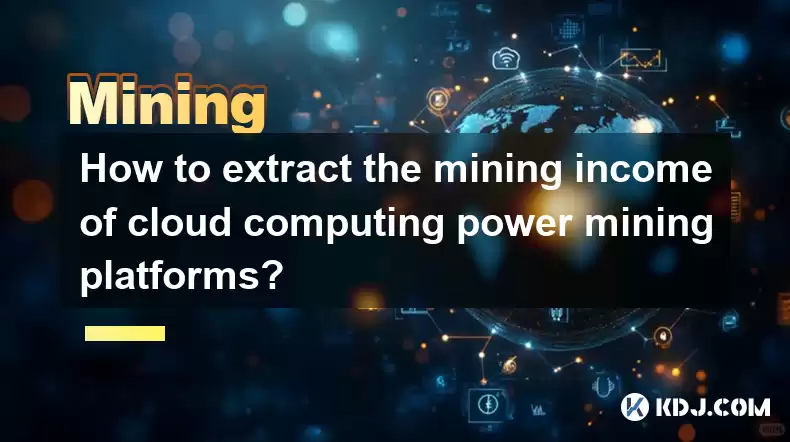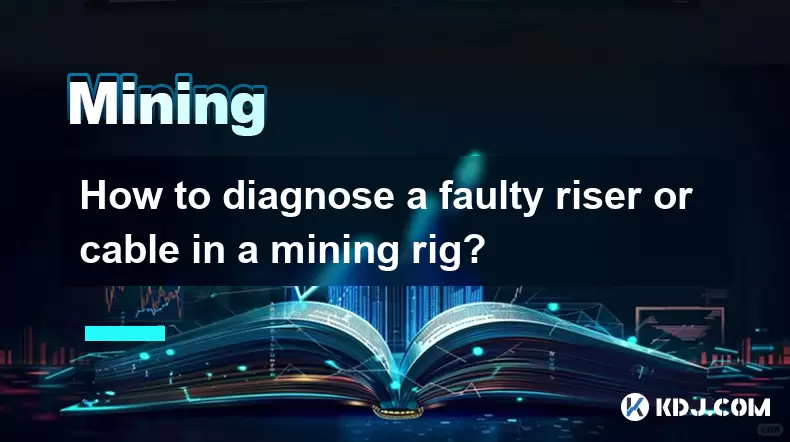-
 Bitcoin
Bitcoin $116800
1.37% -
 Ethereum
Ethereum $3832
5.15% -
 XRP
XRP $3.063
2.69% -
 Tether USDt
Tether USDt $1.000
0.04% -
 BNB
BNB $774.1
0.84% -
 Solana
Solana $170.7
1.56% -
 USDC
USDC $0.0000
0.01% -
 Dogecoin
Dogecoin $0.2142
5.31% -
 TRON
TRON $0.3406
1.90% -
 Cardano
Cardano $0.7635
3.81% -
 Hyperliquid
Hyperliquid $39.55
2.42% -
 Sui
Sui $3.732
7.71% -
 Stellar
Stellar $0.4127
4.25% -
 Chainlink
Chainlink $17.80
6.91% -
 Bitcoin Cash
Bitcoin Cash $576.7
1.66% -
 Hedera
Hedera $0.2521
3.28% -
 Ethena USDe
Ethena USDe $1.001
0.01% -
 Avalanche
Avalanche $22.66
2.19% -
 Litecoin
Litecoin $121.3
2.98% -
 UNUS SED LEO
UNUS SED LEO $8.959
-0.31% -
 Toncoin
Toncoin $3.325
2.88% -
 Shiba Inu
Shiba Inu $0.00001263
2.84% -
 Uniswap
Uniswap $10.11
4.79% -
 Polkadot
Polkadot $3.769
3.22% -
 Dai
Dai $1.000
0.01% -
 Bitget Token
Bitget Token $4.413
1.46% -
 Monero
Monero $272.9
-4.98% -
 Cronos
Cronos $0.1488
4.22% -
 Pepe
Pepe $0.00001088
4.01% -
 Aave
Aave $273.0
4.73%
How to extract the mining income of cloud computing power mining platforms?
Successfully withdrawing cloud mining earnings involves understanding platform-specific interfaces, minimum limits, fees, and security protocols. Double-check wallet addresses and be aware of potential processing delays.
Mar 21, 2025 at 09:07 pm

Key Points:
- Understanding different withdrawal methods offered by cloud mining platforms.
- Navigating platform interfaces to locate the withdrawal section.
- The process of initiating a withdrawal request, including specifying the amount and address.
- Understanding minimum withdrawal limits and associated fees.
- Potential delays and factors affecting withdrawal processing times.
- Security considerations when withdrawing cryptocurrency earnings.
How to Extract the Mining Income of Cloud Computing Power Mining Platforms?
Cloud mining offers a convenient way to participate in cryptocurrency mining without the hassle of managing hardware. However, extracting your mining income requires understanding the specific platform you're using. Each platform has its own interface and procedures. Familiarize yourself with your chosen platform's documentation before attempting a withdrawal.
The first step is locating the withdrawal section on your platform's dashboard. This is usually found under a section labeled "Withdraw," "Account," or similar. The exact location may vary depending on the platform's design. Look for clear instructions and helpful guides provided by the platform.
Before initiating a withdrawal, you'll need a cryptocurrency wallet address. This is where your mined cryptocurrency will be sent. Ensure this address is correct, as sending cryptocurrency to the wrong address can result in permanent loss of funds. Double-check the address before confirming any transactions.
Once you've located the withdrawal section and have your wallet address ready, you'll need to specify the amount you wish to withdraw. Most platforms have minimum withdrawal limits. Failing to meet this limit will prevent you from initiating a withdrawal. Pay close attention to these limits, as they can vary significantly between platforms.
In addition to minimum withdrawal limits, platforms often charge fees for processing withdrawals. These fees can be a percentage of the withdrawal amount or a fixed fee. Understanding these fees is crucial for accurately calculating your net income. These fees are usually clearly stated during the withdrawal process.
After submitting your withdrawal request, it usually takes some time for the transaction to be processed. The processing time can vary depending on the platform's policies, network congestion, and the cryptocurrency itself. Some platforms may provide estimated processing times, but these are not always guaranteed.
Security is paramount when dealing with cryptocurrency withdrawals. Always ensure you're using a secure and reputable platform. Avoid clicking on suspicious links or downloading untrusted software. Use strong passwords and enable two-factor authentication wherever possible to protect your account. Regularly review your account activity for any unusual transactions.
Different platforms offer various withdrawal methods. Some may support direct withdrawals to your personal wallet, while others might use intermediary services. Understand the available options and choose the method that best suits your needs and comfort level. Each method may have its own associated fees and processing times.
Understanding Withdrawal Fees:
Withdrawal fees vary significantly across platforms. Some platforms charge a fixed fee per withdrawal, while others charge a percentage of the withdrawal amount. Always check the platform's fee schedule before initiating a withdrawal to avoid unexpected costs. These fees are often clearly stated on the platform's website or within the withdrawal section itself.
Minimum Withdrawal Limits:
Many cloud mining platforms impose minimum withdrawal limits. This means you need to accumulate a certain amount of cryptocurrency before you can withdraw. These limits are designed to reduce the processing overhead for small withdrawals. Check your platform's terms and conditions to find out their minimum withdrawal amount for each cryptocurrency.
Withdrawal Processing Times:
The time it takes for a withdrawal to be processed varies depending on several factors, including the platform's policies, network congestion, and the specific cryptocurrency. Some platforms process withdrawals instantly, while others may take several hours or even days. Always check the platform's website or support documentation for estimated processing times.
Security Best Practices for Withdrawals:
- Use a reputable platform: Only use established and trustworthy cloud mining platforms with a good reputation.
- Strong passwords: Use strong, unique passwords for your cloud mining account.
- Two-factor authentication (2FA): Enable 2FA for enhanced security.
- Verify withdrawal addresses: Double-check the withdrawal address before confirming any transaction.
- Regularly monitor your account: Regularly check your account for any unauthorized activity.
Common Questions:
Q: What if I enter the wrong withdrawal address?
A: Entering the wrong withdrawal address can result in the permanent loss of your funds. There is usually no way to recover cryptocurrency sent to an incorrect address. Double-check your address meticulously before confirming any withdrawals.
Q: Why is my withdrawal taking so long?
A: Withdrawal processing times can vary due to network congestion, platform processing times, and the specific cryptocurrency. Check the platform's status page or contact their support team if you experience unusually long delays.
Q: What are the fees associated with withdrawals?
A: Withdrawal fees vary depending on the platform and the cryptocurrency. Check the platform's fee schedule or the withdrawal interface for details. These fees can be fixed or a percentage of the withdrawal amount.
Q: What happens if I don't meet the minimum withdrawal limit?
A: You won't be able to initiate a withdrawal until you accumulate the required minimum amount specified by the platform. This minimum is typically clearly stated on the platform's website.
Q: Can I withdraw to any cryptocurrency wallet?
A: The types of wallets supported for withdrawals depend on the platform. Some platforms may only support specific wallets or exchanges. Check the platform's documentation to confirm compatibility.
Disclaimer:info@kdj.com
The information provided is not trading advice. kdj.com does not assume any responsibility for any investments made based on the information provided in this article. Cryptocurrencies are highly volatile and it is highly recommended that you invest with caution after thorough research!
If you believe that the content used on this website infringes your copyright, please contact us immediately (info@kdj.com) and we will delete it promptly.
- Ripple, Rail, and Stablecoin Payments: A $200M Power Play
- 2025-08-07 22:50:12
- Punisher Coin Presale: The Next $Trump? Aiming for 100x Gains!
- 2025-08-07 22:50:12
- Riding the Crypto Wave: Presale Cryptos, Cold Wallets, and the BTC Bull Run
- 2025-08-07 23:10:12
- Crypto's Wild Ride: Punisher Coin, Popcat, and the Meme Coin Mania
- 2025-08-07 23:10:12
- Bitcoin Price, XRP Prediction, Cryptocurrency: Navigating the Wild West of Digital Assets
- 2025-08-07 23:15:12
- WiMi, Quantum Computing, and AR Tech: Navigating the Future Today
- 2025-08-07 22:30:12
Related knowledge

What is "proof-of-work" and how does it relate to mining?
Aug 07,2025 at 02:03pm
Understanding the Concept of Proof-of-WorkProof-of-work (PoW) is a consensus mechanism used in blockchain networks to validate transactions and secure...

What are the differences between mining on Windows vs. Linux?
Aug 06,2025 at 11:29pm
Overview of Cryptocurrency Mining PlatformsCryptocurrency mining involves using computational power to solve complex cryptographic puzzles and validat...

How to use an old computer for cryptocurrency mining?
Aug 07,2025 at 12:42pm
Understanding the Feasibility of Using an Old Computer for MiningUsing an old computer for cryptocurrency mining may seem outdated, but it is still te...

Can you mine cryptocurrency using solar power?
Aug 07,2025 at 12:00am
Understanding the Basics of Cryptocurrency MiningCryptocurrency mining involves validating transactions on a blockchain network by solving complex cry...

How to build a mining rig inside a PC case?
Aug 06,2025 at 11:01pm
Understanding the Basics of a Mining Rig in a PC CaseBuilding a mining rig inside a PC case involves transforming a standard computer chassis into a d...

How to diagnose a faulty riser or cable in a mining rig?
Aug 07,2025 at 01:49am
Understanding the Role of Riser Cables in Mining RigsIn a cryptocurrency mining rig, riser cables serve as the bridge between the motherboard and the ...

What is "proof-of-work" and how does it relate to mining?
Aug 07,2025 at 02:03pm
Understanding the Concept of Proof-of-WorkProof-of-work (PoW) is a consensus mechanism used in blockchain networks to validate transactions and secure...

What are the differences between mining on Windows vs. Linux?
Aug 06,2025 at 11:29pm
Overview of Cryptocurrency Mining PlatformsCryptocurrency mining involves using computational power to solve complex cryptographic puzzles and validat...

How to use an old computer for cryptocurrency mining?
Aug 07,2025 at 12:42pm
Understanding the Feasibility of Using an Old Computer for MiningUsing an old computer for cryptocurrency mining may seem outdated, but it is still te...

Can you mine cryptocurrency using solar power?
Aug 07,2025 at 12:00am
Understanding the Basics of Cryptocurrency MiningCryptocurrency mining involves validating transactions on a blockchain network by solving complex cry...

How to build a mining rig inside a PC case?
Aug 06,2025 at 11:01pm
Understanding the Basics of a Mining Rig in a PC CaseBuilding a mining rig inside a PC case involves transforming a standard computer chassis into a d...

How to diagnose a faulty riser or cable in a mining rig?
Aug 07,2025 at 01:49am
Understanding the Role of Riser Cables in Mining RigsIn a cryptocurrency mining rig, riser cables serve as the bridge between the motherboard and the ...
See all articles

























































































